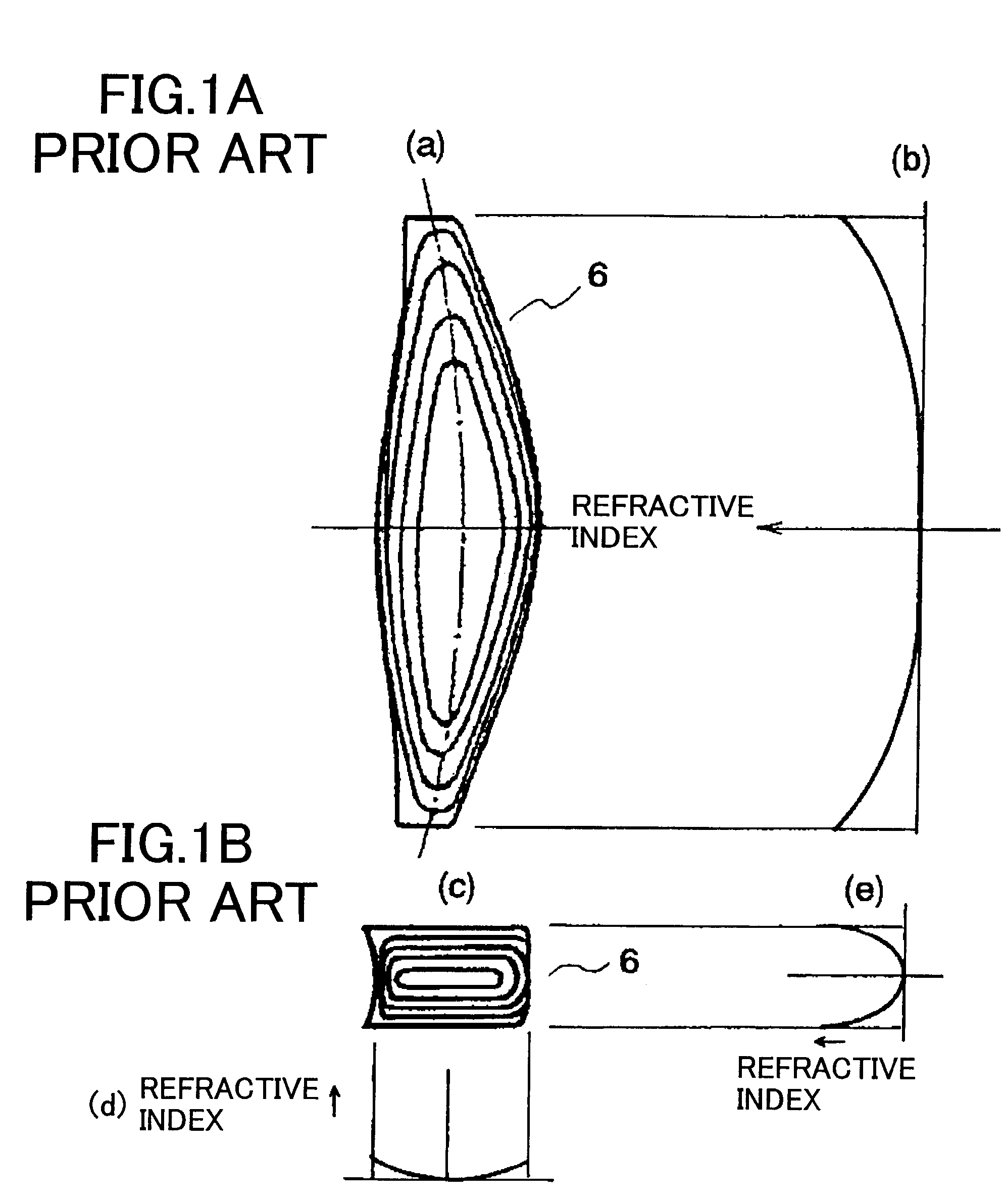Optical element, optical scanner and image forming apparatus
an optical scanner and optical element technology, applied in the field of optical elements, optical scanners and image forming apparatuses, can solve the problems of inability to ensure the success of adjustment increase denaturation in the interior of molded plastics, and inability to adjust for other image heights
- Summary
- Abstract
- Description
- Claims
- Application Information
AI Technical Summary
Benefits of technology
Problems solved by technology
Method used
Image
Examples
first embodiment
[0135]A description will now be given, with reference to FIG. 4 through FIG. 10, of an optical element according to the present invention.
[0136]FIG. 4 is a diagram for explaining an optical scanning system including an image forming scanner lens being the optical element according to the first embodiment. FIG. 5 and FIG. 6 are tables of coefficients of individual surfaces of the optical element without a refractive index distribution with respect to the main scanning direction and the sub-scanning direction. FIG. 7 is a table of coefficients of a refractive index distribution of the optical element with the refractive index distribution according to the first embodiment of the present invention. FIG. 8 and FIG. 9 are tables of individual surfaces of the optical element with the refractive index distribution according to the first embodiment with respect to the main scanning direction and the sub-scanning direction. FIGS. 10A through 10E show focused positions of the optical element ...
second embodiment
[0160]A description will now be given, with reference to FIG. 11 through FIG. 20, of an optical element according to the present invention.
[0161]FIG. 11 is a diagram for explaining an optical scanning system including an image forming scanner lens being the optical element according to the second embodiment. FIG. 12 through FIG. 15 show coefficients of optical elements having no refractive index distribution according to the second embodiment with respect to the main scanning direction and the sub-scanning direction for each surface thereof. FIG. 16 and FIG. 17 are tables of refractive index distributions of lenses 6 and 7, respectively, having the refractive index distributions according to the second embodiment. FIG. 18 and FIG. 19 are tables of coefficients of the lens 6 with respect to the main scanning direction and the sub-scanning direction for each surface thereof. FIGS. 20A through 20E show focused positions of the optical elements according to the second embodiment with re...
third embodiment
[0186]A description will now be given, with reference to FIG. 21 through FIG. 23, of an optical element according to the present invention.
[0187]FIG. 21 and FIG. 22 show coefficients of an optical element having a refractive index distribution according to the third embodiment with respect to the sub-scanning direction for each surface thereof. FIGS. 23A through 23C show focused positions of the optical element according to the third embodiment with respect to the main scanning direction and the sub-scanning direction.
[0188]An optical scanning system according to the third embodiment is fundamentally similar to the optical scanning system including an image forming scanner lens being the optical element according to the second embodiment. The optical scanning system differs from the optical scanning system according to the second embodiment in that coefficients of the lens 7 with respect to the sub-scanning direction are determined for each surface thereof so that misalignment of fo...
PUM
 Login to View More
Login to View More Abstract
Description
Claims
Application Information
 Login to View More
Login to View More - R&D
- Intellectual Property
- Life Sciences
- Materials
- Tech Scout
- Unparalleled Data Quality
- Higher Quality Content
- 60% Fewer Hallucinations
Browse by: Latest US Patents, China's latest patents, Technical Efficacy Thesaurus, Application Domain, Technology Topic, Popular Technical Reports.
© 2025 PatSnap. All rights reserved.Legal|Privacy policy|Modern Slavery Act Transparency Statement|Sitemap|About US| Contact US: help@patsnap.com



